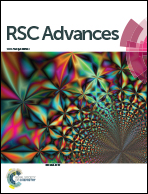Brucite shows antibacterial activity via establishment of alkaline conditions
Abstract
Brucite, a mineral form of magnesium hydroxide, has been used industrially as a useful refractory insulator. However, its antibacterial activity remains largely unknown. This study investigated the antibacterial activity of brucite in two bacterial strains, Escherichia coli (Gram-negative) and Staphylococcus aureus (Gram-positive). Brucite, compared to other minerals, showed a strong antibacterial activity against both bacterial strains. The surface structure of brucite examined using scanning electron microscopy (SEM) had no implications in its antibacterial activity. Brucite in lysogeny broth (LB) medium maintained the basicity (pH 9) of the solution for a prolonged period of time. The basicity of the medium was responsible for the antibacterial activity of brucite. The study results identified brucite as a potent antibacterial agent that required no further processing and also revealed the underlying mechanism of action responsible for its antibacterial activity.



 Please wait while we load your content...
Please wait while we load your content...